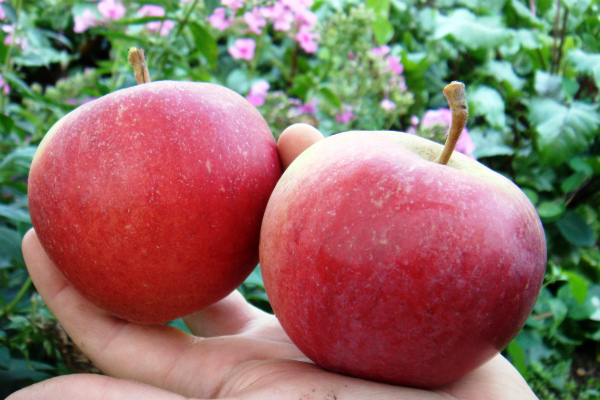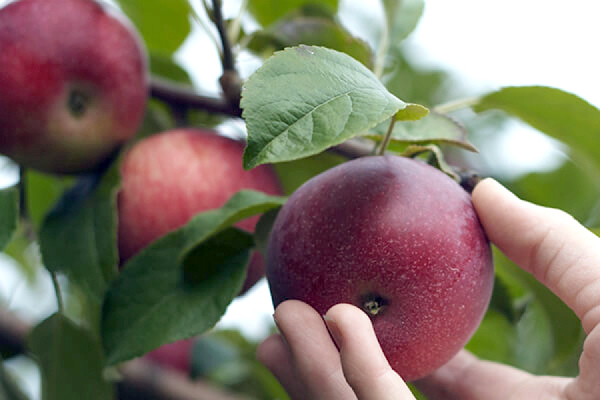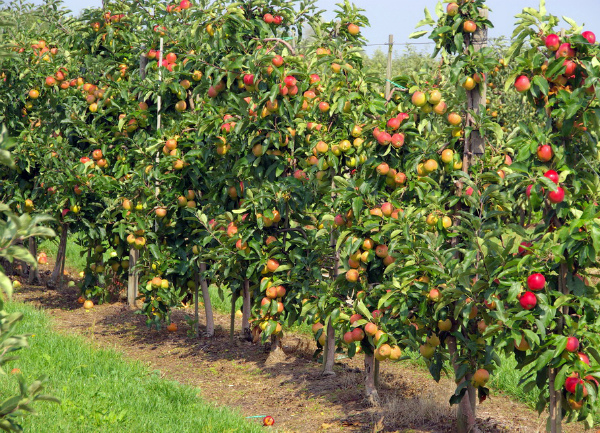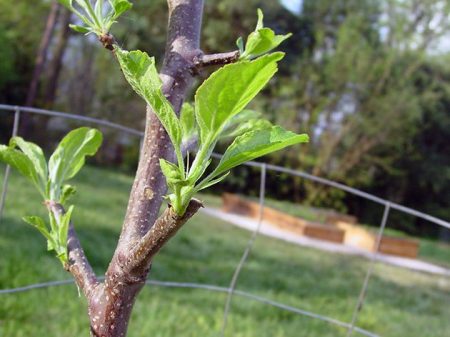Apple tree Krasa Sverdlovsk - the dream of any gardener
Content
Origin
For the first time, the variety was bred more than a quarter of a century ago at the Sverdlovsk Experimental Station (the city of Sverdlovsk) by breeders Dibrova, Kotov and Vengerova. The variety was most widespread on the territory of the Upper Volga region, the Middle and South Urals. However, they love and appreciate him in the central regions of Russia. According to the observations of gardeners and breeders, "Krasa Sverdlovsk" takes root well in the stanza culture of Altai and Western Siberia.
Description of the variety
Description of the variety "Krasa Sverdlovsk" should begin with the characteristics of the tree, because this is what allows you to calculate the correct number of seedlings.
The apple tree grows of medium height, the crown develops a rounded shape, rather dense. Skeletal branches extend from the trunk almost at right angles, covered with dark brown bark. Fruits are formed on fruit twigs and ringlets. The variety is characterized by shoots with large lenticels, geniculate and pubescent. The leaves grow large, somewhat wrinkled, dark green, shiny, with a slightly pointed tip and heart-shaped base.
Blossoms "Beauty of Sverdlovsk" with large white flowers with a wide calyx. The stamens are long, the pistils protrude slightly above the anthers. Buds on the eve of flowering burgundy.
Finally, a description should be provided of the most delicious side of the Krasa Sverdlovsk variety - the fruit. The size of apples ranges from medium (about 160 grams) to large (about 240 grams). They are round and regular in shape, almost not ribbed, covered with a smooth, dry skin with a pronounced waxy coating. The main color of the peel is green-yellow, the integumentary color is deep red, manifests itself mainly on the upper part of the fruit, but often spreads throughout the apple. The peduncle is of medium length. The funnel is wide, of medium depth, bronze in color. The seed chambers are closed; the seeds themselves are small, ovoid, and brown in color.
Fine-grained flesh is hidden under the bright peel. The apples are juicy with a sweet and sour taste, but with a moderately pronounced aroma.
For 100 grams of pulp, there are:
- 16% dry matter;
- 13% sugar;
- 1.1% titrated acids;
- 20 mg of ascorbic acid;
- 302 mg of P-active substances.
Of the positive aspects that are favorably represented by the Krasa Sverdlovsk variety, among other winter varieties, when ripe, the fruits do not fall off, moreover, they are well transported. The storage period is up to 200 days if the basic rules are followed (cool dry place). At the same time, keep in mind that the apple tree requires cross-pollination, that is, it is self-fertile.
The apple tree enters the fruiting phase at 6 years after budding, but bears fruit every year, bringing about 100-200 centners per hectare of plantings.
About self-fruitless varieties and the selection of pollinating varieties
Self-infertile varieties, which include "Krasa Sverdlovsk", require finding a number of relatives of other varieties that pollinate trees during flowering.A very important point is not to plant apple trees of only one variety, since the probability of not getting any harvest at all is incredibly high. Although the harvest is often there, it is rather meager.
It is imperative to carefully select varieties that will pollinate self-fertile trees. First, the pollinating apple tree should start bearing fruit at the same time as the self-fertile one. Secondly, the flowering period should coincide as much as possible in its beginning and duration. Third, the pollinating apple tree must be a zoned variety that bears fruit well in your area.
Since choosing varieties at random is a rather unfortunate decision, you should check your choice with the lists that are being developed in research institutions. They take into account all the main characteristics that must be the same for trees of different varieties: taste, commercial characteristics, peculiarities of plant vegetation, climatic preferences.
Care features
At its core, the description of caring for the Krasa Sverdlovsk variety is practically no different from caring for any other fruit tree.
The first wellness treatments begin in the spring before bud break. Of course, this is the pruning of old branches and the formation of the crown. In young trees, the crown is formed annually, starting from the second year of life, since this has a positive effect on the quality of fruiting. To prevent the apple tree from producing lateral shoots, it is necessary to prune the vertical ones, thus adjusting the height of the tree.
During fruiting, it is important to cut off the middle fruit from each inflorescence and remove damaged fruits.
The apple tree requires moderate watering, especially if the summer is not very hot, at least 3 buckets of water must be poured under each tree. Together with watering, trees can be fertilized with humus and minerals. It is very good to add urea and nitrogen in the spring.
The apple tree is moderately resistant to scab, but rather vulnerable to other fungal and infectious diseases. Among them, the most dangerous are powdery mildew and apple crayfish.
Powdery mildew affects the entire aerial part of the tree, starting its distribution with shoots and leaves. The first symptoms are a powdery coating on the green part of the apple trees, which can be removed quite easily. Over time, it acquires a denser structure and brown color, covering the affected areas with a crust. The development of the disease is manifested by wilting of leaves and shoots, followed by dropping or withering away. Little by little the tree dies. The main danger of powdery mildew is that it spreads rather quickly through the garden, moving to other crops, and also overwinters easily in the folds of the bark and the upper layer of the soil.
The chemical preparation Fitosporin is used as a treatment. Every spring, trees must be sprayed with colloidal sulfur (diluting 80 grams of sulfur in 10 liters of water). It is imperative to remove infected shoots, leaves, fruits or branches, and also to remove the old bark in the spring.
Apple cancer occurs with temperature changes and manifests itself as ulcers and growths of black or brown color. The bark falls off on the affected areas of the tree. As a treatment, infected branches and bark are removed, capturing some healthy tissue as well. It is imperative to treat the tree with antiseptic drugs.
The apple tree does not get along very well with frost, so it will be a good favor to insulate the near-trunk circle with mulch, as well as to wrap the trunk (especially in young trees) with insulating material.
Video "Yablonka Beauty of Sverdlovsk"
This video talks about the Krasa Sverdlovsk apple tree and the peculiarities of caring for it.
Comments:
1. Quite a good variety. I have it side by side with "Isetskaya late" - a very good harvest.
2. If you fertilize well for the winter and sprinkle enough sawdust with peat, then "Krasa" winters very well.






